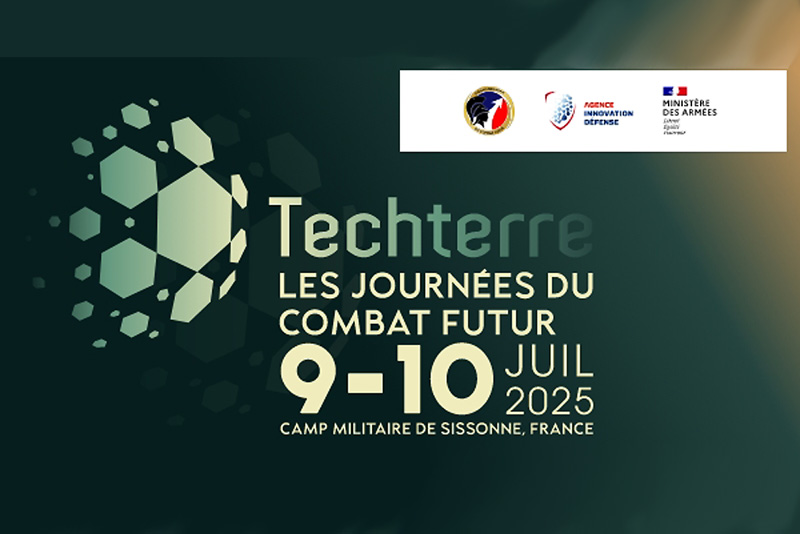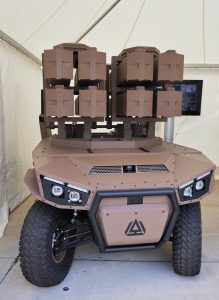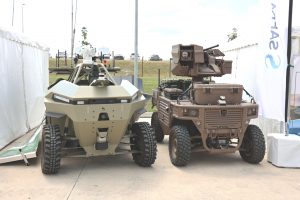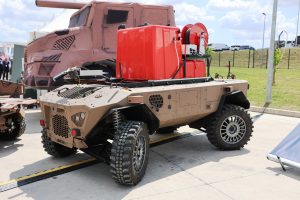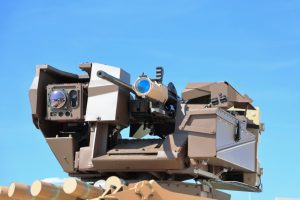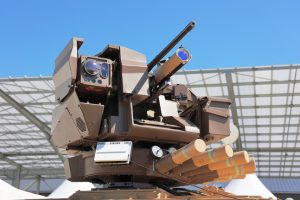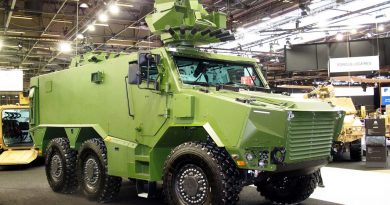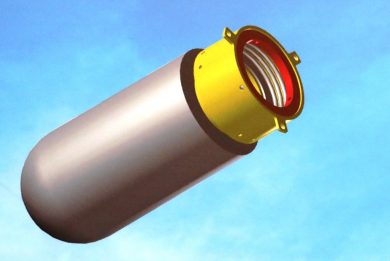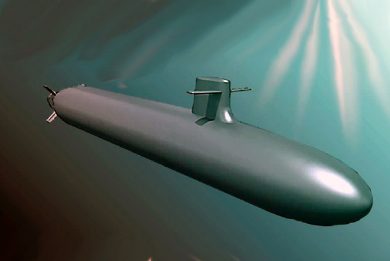TechTerre 2025 – French Army and Industry meet at the Urban Action Training Centre in Sissonne
On the 9th and 10th of July 2025, the first edition of TechTerre took place at the Sissonne military camp, some 140 km north-east of Paris, and more specifically at the CENZUB (Centre d’Entraînement aux Actions en Zone Urbaine), the Urban Action Training Centre. Techterre was a new event organized by the Commandement du Combat Futur (CCF), the French Army Future Combat Command
TechTerre 2025 saw the participation of major defence companies, innovative start-ups, as well as 28 units of the French Army and their innovation cells, the aim being to allow the launch of new projects, the response to demands for concrete and rapid solutions, and to jointly develop the latest operational needs expressed by the units of the Armée de Terre.
Techterre 2025 was innovation, short circuit creation, and the projection of the most modern and powerful technologies not only in the long term but also immediately, without renouncing to demonstrators and development iterations for more comprehensive researches.
Organised by the Direction Générale de l’Armement (DGA), the French Defence Procurement Agency, and the Section Technique de l’Armée de Terre (STAT), the French Army Technical Section, with financial support of local industry, the themes were open-ended, ranging from simple improvements to soldiers’ life to the most complex imaging or intelligence technologies. Each month, several projects are supported, whether they originate from professionals or feedback from regimental innovation cells, a two-way process that is increasingly evolving each day in both directions.
Experiments are carried out quickly in the field to correct and improve, to meet a doctrine of employment and compatibility, to unify and disseminate them across regiments with similar specificities, all while imagining parallel development for other services and even extrapolating cooperation with foreign and allied forces.
Over two days, these meetings brought together 70 exhibitors with a thousand participants divided equally between manufacturers and Army units, developing or strongly interested in these innovations and creations, to meet their immediate or future needs and adapt as best and as quickly as possible to the versatility of current conflicts.
Among the various subjects, mobile robotics was one of the key issues of Techterre.
Arquus-John Cockerill presented several innovations, combining unmanned ground vehicles (UGVs) with autonomous defence systems. The Drailer demonstrator, already present on the Arquus stand at Eurosatory 2024, was unveiled in its Drailer Marseus version, equipped with a battery of eight Akeron LP long-range missiles developed by MBDA. Completely autonomous, it is designed to launch a strike beyond the operator’s direct line of sight while protecting itself from targeted retaliatory fire.
Major players in military industrial robotics were present at Techterre, following the restricted call for tenders launched by the DGA for the supply of thirty autonomous platforms, divided into two successive phases, including associated robotic mission solutions.
Bids are expected by September 30, 2025. SOFRAME, KNDS, and Arquus are in the running, but other candidates are emerging, such as UNAC and its robotic version of the Fardier by Safran.
The selection and contracting process should provide rapid responses before 2026, but several manufacturers are already completing their bids, such as the temporary business association between Arquus and CSI (CNIM) and the adaptation of the ROCUS route clearing UGV renamed ROBIN (ROBot d’Investigation). Or KNDS, which responded by presenting at this first edition a firefighting robot developed on its Centurio, whose needs had been expressed by the firefighters of the Canjuers shooting range to counter the outbreak of several fires during shooting sessions in the dry season.
There is no doubt that land robotisation will develop with a multitude of diverse applications, providing solutions for ease of intervention with reactive, innovative, and rapid responses to evolving conflicts, while protecting personnel.
Shifting to effectors, the Air Guard version of the Hornet remotely operated turret was already showcased last May at the ARQUUS-John Cockerill Techno Days. At TechTerre 2025 a new configuration dedicated to antidrone warfare was unveiled, in the presence of the French Army Chief of Staff, General Pierre Schill, and of Arquus CEO, Emmanuel Levacher.
The Air Guard previously seen was based on a T1 turret armed with a conventional weapon, such as the M2HB FN Herstal 12.7mm calibre machine gun, and an Echodyne radar, and was fitted with an independent grenade launcher crown offering full 360° rotation fitted with Galix effectors.
Since the Techno Days, and as part of a French partnership structured around previous experience with the Skywarden system with CILAS, the Air Guard has been augmented with a short-range HELMA-LP (Low Power) laser integrated into the main system, enabling more responsive targeting and destruction.
Initial test firings were conducted on targets moving at low speed at a distance of approximately 200 meters. It took just one second for the laser weapon to neutralize the drone’s optics, and less than 10 seconds to permanently disable the drone.
A hybrid system that allows the acquisition and neutralization of lightweight flying targets, the Arquus proposal can be installed on light or heavy armoured vehicles such as the company Sherpa, Serval, or Griffon, as well as on third parties vehicles.
At the demonstrator stage, this solution was the subject of a dynamic demonstration to generate interest among the armed forces aiming at the possible industrialization of a mixed, tactical, and versatile anti-drone system.
Photos by J. Hadacek

